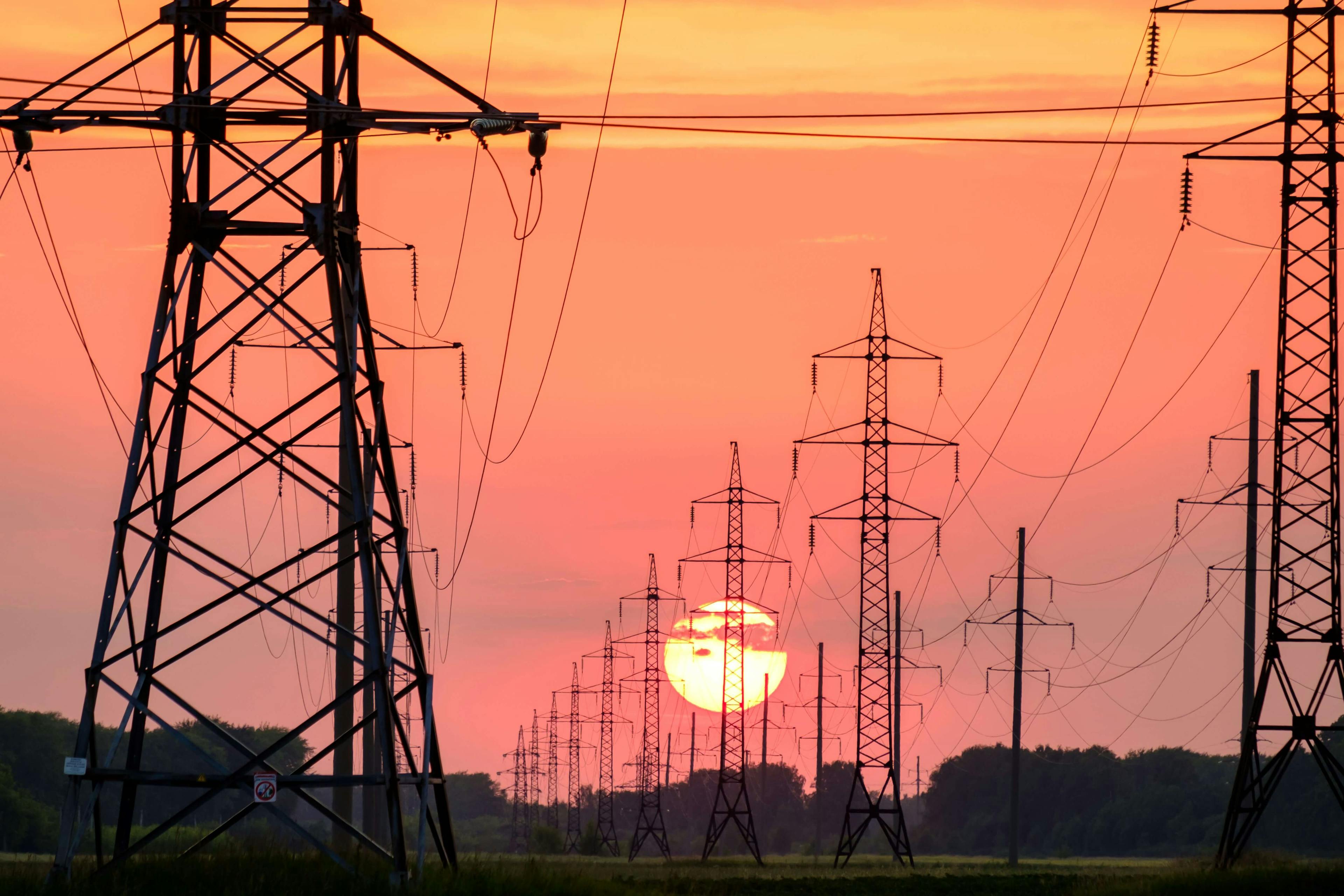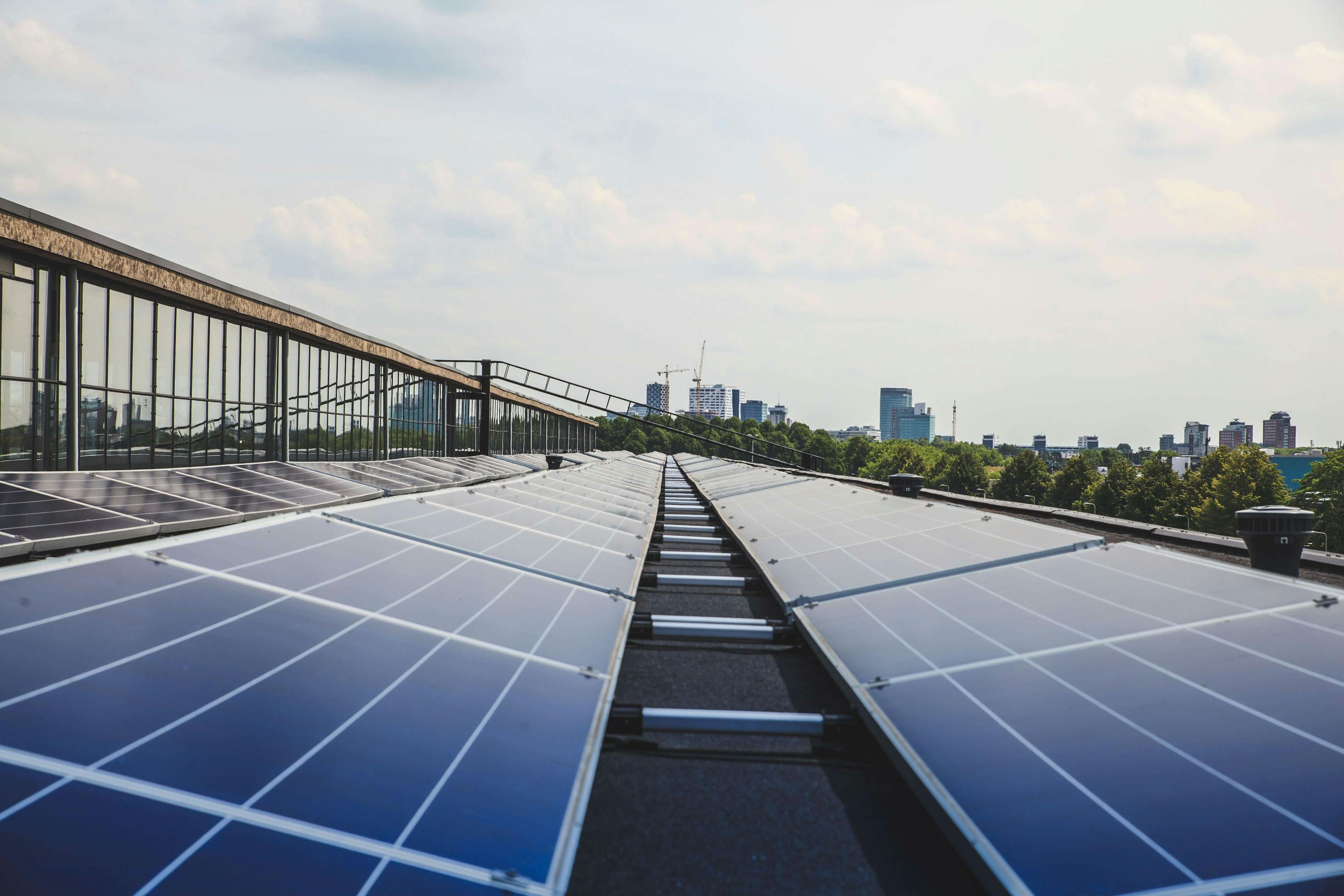What is a DSO? An Essential Guide to Distribution System Operators
4 Aug 2023

The patterns of energy production and consumption from generators and consumers are changing. The prosumer is on the rise, especially as projects like home solar popularise.
Rooftop solar has popularised residential renewables alongside the growth of the wider renewable energy industry. Those who once only consumed energy are now producing it as well. This change requires systematic adaptation. For the UK's energy sector, that means moving away from traditional distribution network operators (DNO) towards distribution system operators (DSO).
Power is currently distributed through passive DNOs that take a linear approach to distribution which is becoming outdated. DSOs offer an active, non-linear approach to power distribution.
This article answers the questions of ‘What is a DSO?’, why DNOs are transitioning to the DSO model and the impact that distribution system operators have on the growth of renewable energy.
What is a Distribution System Operator?
A distribution system operator (DSO) is a method of operation that evolved from modern distribution network operators to actively balance power inputs and outputs by integrating a diverse range of distributed energy resources into the grid. Because the DSO is a model of operation, they are not singular organisations (although they can be), but still serve many of the same distribution functions.
This enables DSOs the flexibility and control required to be active in power flow management. Though it should be noted that the definition and responsibilities of the DSO are still evolving as they become prominent.
The primary responsibilities of the DSO can be divided into three categories:
- Network planning and development
- Network operations
- Market development
DSOs share many of the same responsibilities as distribution network operators, but there is a new emphasis on the active, data-driven balancing of supply and demand.
Many DNOs are transitioning to the DSO model due to improvements in efficiency and cost-effectiveness. The traditional DNO approach managed the one-way flow of electricity from centralised generators to consumers. Nowadays, DNOs face the challenge of managing multiple energy generators with diverse outputs resulting from the increased adoption of distributed energy resources (DERs).
The DSO model is better suited for integrating DERs through its use of real-time monitoring and modelling. Consequently, DSOs can be more responsive by actively balancing consumer demand and ensuring grid stability thanks to advances in technology.
In the UK, Ofgem is the main regulatory body for energy operators. The regulated system of the 6 UK DNOs that Ofgem oversees is transitioning to the DSO model. To ensure the protection of consumer rights and market competition, Ofgem will have jurisdiction over any operators that provide DSO services in the UK.
Take a look at our guide to find out more about distribution network operators (DNOs).
The Role of DSOs in Energy Distribution
Distribution system operators have three essential roles, namely:
- Network planning and development
- Network operation
- Market development
We break down these essential roles below.
Network planning and development
Under the umbrella of network planning and development comes functions relating to systematic responses in the face of uncertainty. Some key functions include, but are not limited to:
- Connection services: the connection of new customers, generators, and other participants to the distribution network
- Network innovation: researching and implementing new technologies, processes, and strategies to improve the efficiency, performance, and reliability of service
- Network reinforcement: optimising network performance through the upgrading of existing or installation of new infrastructure
- System development: planning and developing the network’s growth to ensure that it can meet the demands at an individual, local and regional level for consumers now and in the future
Network operation
For network operation come functions that facilitate the efficient transmission of power and the flexibility of said distribution services. This function best highlights the primary distinction between DNOs and DSOs, with the active role distribution system operators assume. Some key responsibilities include, but are not limited to:
- Network maintenance: the day-to-day upkeep of the cables, towers, transformers, and substations that distribute power from the grid to consumers. Additionally comes the responsibility of responding to incidents or network failures that may occur. For example, keeping transmission operational during times of bad weather
- Real-time monitoring: measuring the usage of electricity and looking for any spatial and/or temporal irregularities or patterns. This is increasingly supported by smart metres and digitisation as consumers are now able to actively report usage or inactivity to the operator
- Grid stability: actively balancing the supply and demand of power within the grid. Driven by the data provided from monitoring use, DSOs can employ a wide variety of tactics to ensure a steady supply of power. This may include using BESS to locally store energy from projects but only deploy it to the grid at times when power input to the grid isn’t saturated
- DER integration: optimally integrating the power that distributed energy resources (DERs) generate and balancing it against network demands given the environmental conditions that affect output
Market development
Under market development come functions that ensure fair and transparent processes for procuring flexible distribution services. Some key functions include, but are not limited to:
- Local resource monetisation: the fair procurement of locally produced power from DERs (e.g. home solar panels) to maintain a balanced grid
- Demand-side participation: the encouragement of consumers to participate in demand-management programs such as incentives to use energy outside of peak times
- Competition-promoting practices: create and maintain fair and visible conditions that allow participants to freely enter and exit. Encourage competition and innovation while integrating new technologies to develop a more efficient and sustainable system for stakeholders
Each function is flexible in definition, and the placement regarding which role it serves is contestable. The non-linear nature of the DSO model means that all the roles are mutually supportive and can blur distinctions. This article is simply a high-level overview of what can be a very intricate operation.

The Role of DSOs in Renewable Energy
DSOs play an important role in the growth of renewable energy in three ways:
- Integrate renewable energy with the grid
- Ensure grid stability
- Support the decentralisation of energy production
The integration of renewable energy poses unique challenges because legacy grids were never designed to support the introduction of electricity from discrete sources with differing outputs.
DSOs are what link generators - ranging anywhere from home solar panels to utility-scale projects like solar farms - to consumers.
The non-linear nature of DSO networks creates a marketplace for all the DERs in a region to become accessible to both the grid and each other. DSOs facilitate the sale of energy in localised areas to increase energy efficiency and reduce the costs of transmission.
The core functions of distribution system operators in network operation (monitoring, forecasting, and balancing) address the inherent intermittent nature of renewable energy. Balancing is the most active part of maintaining equilibrium and can be achieved in several ways.
Battery energy storage systems (BESS) create a reserve of power during times of surplus generation to supplement the grid during periods of high demand. This is especially relevant to renewable energy as peak generation periods may not coincide with peak consumption periods.
It’s worth noting that BESS is just part of a wider field of energy storage using different forms of energy including gravitation potential and chemical to convert into the usable electrical form.
Peak shaving refers to strategies that DSOs implement to maintain the controllability of demand.
DSOs are uniquely suited to peak shave thanks to one of their essential tasks being the integration of DERs. By creating a marketplace and integrating discrete generators – the localised – small-scale production of electricity flattens demand peaks and reduces congestion of the grid as a whole.
The rising popularity of the distribution system operator model is to be expected as it allows for more responsive economic, and reliable operations on top of promoting the use of green energy.
Coupled with increasing accessibility for renewable energy entrepreneurs to access project financing – be it wind or solar project financing – to start a renewable energy business, DSOs will become key players in the transition to a low-carbon economy.
Challenges & Opportunities for DSOs in the UK
Power distributors in the UK are in a unique position due to a nationwide initiative pushing DNOs to transition to a DSO model in support of the Net Zero Strategy. That means many of the trends that affect DNOs will continue to apply to DSOs in the UK, but will put distribution system operators in a position to make the most of the opportunities given.
Some key renewable energy trends that impact DSOs include the rise of smart grids, digitalisation, system resilience through cyber security improvements, advances in data management, and the growth of varying energy sources. They all provide live insights to better inform the decision-making in real-time and feed-forward to future strategy. This means DSOs are better suited to act given their active management of the network.
DSOs have many opportunities ahead of them, but not without challenges that must be addressed. Some of the key challenges they face are stakeholder engagement, infrastructure upgrades, and electric vehicles.
Stakeholder engagement is one of the most pressing challenges that distribution system operators will have to engage in. Successful engagement of stakeholders will create an ecosystem of sustainable energy participants, but doing so requires significant effort from the operator. The DSO must work to constantly be transparent, disseminate information, and engage stakeholders to ensure information parity.
Infrastructure upgrades are another hurdle that DSOs have to navigate as they are entering a sector with pre-existing and ageing infrastructure. The networks that already exist must be upgraded to fulfil the functions of modern distribution system operators and support greater demand with population increases.
The unidirectional infrastructure created by DNOs must come to support the bidirectional flow of information and power being created by renewable energy sources.
Also, the growth of electric vehicles (EV) presents another challenge due to the additional load it imposes on the grid but also has the potential to become a stabilising force. In a pioneering concept known as vehicle-to-grid integration, EVs can act as mobile storage solutions to help in peak shaving. Even with its potential, considerable capital needs to be invested into EV batteries before the challenge can be turned into an opportunity.
The future of distribution system operators in the UK looks bright. Most of the challenges that DSOs face require capital to overcome, but the network innovation funding from Ofgem’s nationwide initiative will help lower the barrier of entry. Specifically under RIIO-ED2 which outlines the UK energy sector’s price control measures and the guidelines for the DSO transition. As DSOs become more established, the UK’s grid will become more efficient, and responsive.

Case Studies: DSO Initiatives in the UK
As stated above, the UK is in a unique position with its nationwide push to incentivise the adoption of the DSO model. The regulated monopoly is supervised by Ofgem transitioning DNOs to become distribution system operators under the new price control scheme and incentive governance structure as outlined by RIIO-ED2.
Despite the nationwide transition becoming de facto legislation at the start of RIIO-ED2 in April 2024, there have been independent moves by DNOs to adopt the DSO model to become more flexible and decentralised. The first of the 6 UK DNOs to transition to a DSO model was UK Power Networks with their flexible plug-and-play project.
Flexible plug-and-play was a three-year-long research project that concluded in 2014 with a focus on the quicker and cheaper integration of distributed generation and smart technologies.
The conclusions of the study were shared with the industry and helped set the stage for the transition to flexible connection agreements between consumers and operators.
Signing Off
DNOs were part of a traditional one-dimensional flow of energy from generator to consumer with a passive mentality. DSOs are switching to a proactive method of balancing power inputs and output in a complex multi-directional system. The DNO to DSO transition is due to the greater flexibility, resilience, and cost-effectiveness that it offers.
DSOs will still serve many of the same functions as DNOs but are better positioned to accommodate the growth of renewable energy and integrate it into the grid.
In the UK, distribution system operators are here to stay and will form part of the future UK energy infrastructure. Substantial investments into the R&D of DNOs to adopt the DSO model will make for a more responsive grid that will offer cost-effective localised solutions. With their growth will come cost savings and a foundation for green energy to build upon.
PF Nexus is an innovative cleantech platform connecting users with over 4,600 renewable energy industry professionals including developers, investors, and advisors through our ecosystem database and renewable energy marketplace. To find out more, get in contact today.
Sources
https://innovation.ukpowernetworks.co.uk/projects/flexible-plug-and-play/